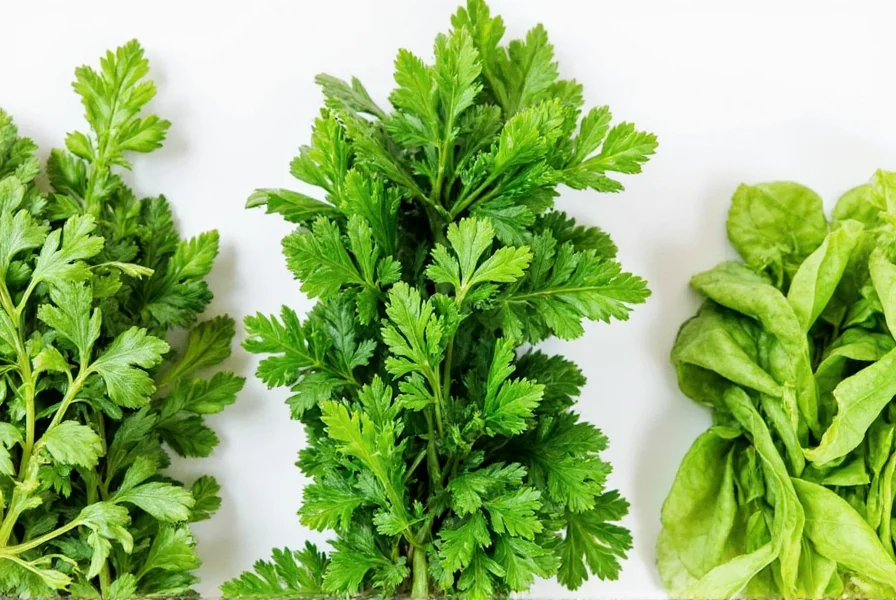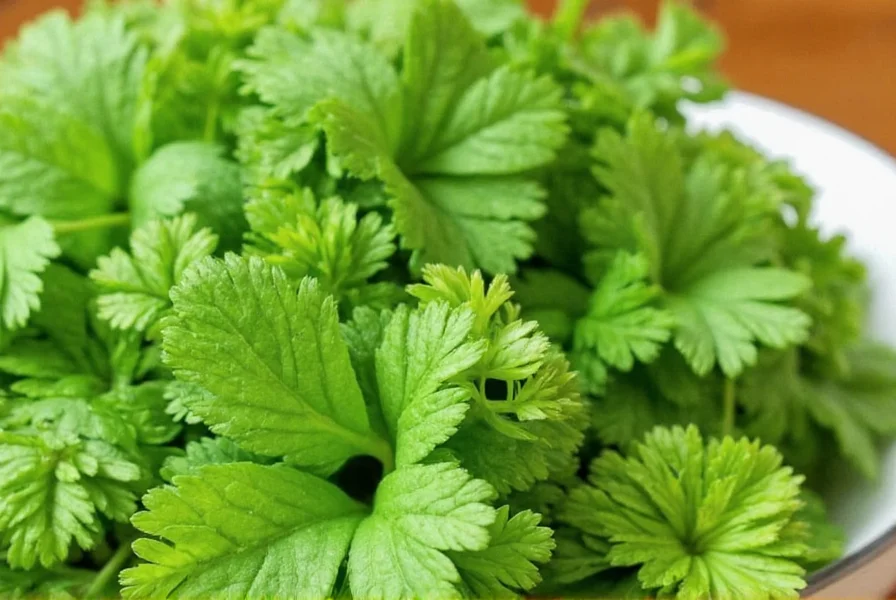The best replacements for coriander (cilantro) are parsley, culantro, and basil, depending on your specific culinary needs. For most savory dishes, flat-leaf parsley offers the closest visual match with a milder flavor, while culantro provides a stronger, more similar taste profile. If you're cooking Thai or Vietnamese cuisine, basil makes an excellent substitute. For dried coriander seed replacements, cumin or caraway seeds work well in spice blends.
When you're in the middle of cooking and realize you're out of coriander, knowing the right substitute can save your dish. Coriander, known as cilantro in the Americas, has a distinctive citrusy, slightly peppery flavor that's challenging to replicate exactly. However, several herbs and spices can effectively stand in depending on your recipe and regional cuisine.
Understanding Coriander's Unique Flavor Profile
Coriander's fresh leaves contain aldehydes that create its signature bright, citrusy flavor with hints of pepper and sage. This unique chemical composition explains why finding an exact replacement is difficult. Approximately 21% of the population perceives coriander as soapy due to genetic factors, making substitution knowledge valuable for both availability issues and personal taste preferences.
Top Fresh Herb Substitutes for Coriander
| Substitute | Flavor Comparison | Best Used In | Substitution Ratio |
|---|---|---|---|
| Flat-leaf parsley | Milder, grassier, less citrusy | Mexican, Mediterranean dishes | 1:1 volume replacement |
| Culantro | Stronger, more pungent, similar citrus notes | Caribbean, Latin American cuisine | 1:1.5 (use less culantro) |
| Thai basil | Sweet anise notes, less citrusy | Asian curries, stir-fries | 1:1 volume replacement |
| Mexican papalo | Peppery, arugula-like with citrus hints | Mexican salsas, guacamole | 1:1 volume replacement |
Fresh Herb Substitution Guidelines
When replacing fresh coriander in recipes, consider both flavor profile and texture. Flat-leaf parsley works best as a visual substitute in dishes like pico de gallo or guacamole where appearance matters, though it lacks coriander's distinctive citrus notes. For coriander replacement for cilantro haters, try mixing equal parts parsley and mint to create a more complex flavor that avoids the soapy taste perception.
Culantro, often called "spiny coriander," grows in tropical regions and has a stronger flavor than regular coriander. Use it sparingly as a coriander leaf substitute in Indian cooking or Caribbean dishes, as its flavor intensifies when cooked. This makes it particularly useful for long-simmering dishes like stews and curries where regular coriander would lose its delicate flavor.

Dried Coriander Seed Alternatives
When you need a dried coriander substitute options for spice blends, consider these alternatives:
- Cumin - Provides earthiness with a citrus undertone (use ¾ teaspoon cumin for every 1 teaspoon coriander)
- Caraway seeds - Offers similar citrus notes with more warmth (use ½ teaspoon caraway for every 1 teaspoon coriander)
- Fennel seeds - Works well in Mediterranean dishes (use ⅔ teaspoon fennel for every 1 teaspoon coriander)
For best substitute for coriander in curry applications, a combination of cumin and a pinch of lemon zest often delivers the most authentic results. The citrus element is crucial since coriander's distinctive flavor comes from its limonene content.
Cuisine-Specific Substitution Recommendations
Different culinary traditions require tailored approaches when seeking a coriander replacement for Mexican dishes versus Asian or Indian cuisine:
- Mexican cuisine: Use equal parts parsley and mint, or try papalo which is traditionally used in central Mexico as a coriander alternative
- Indian cooking: For fresh coriander, try a mix of mint and parsley; for dried coriander seed, use cumin with a touch of lemon zest
- Thai/Vietnamese dishes: Thai basil provides the closest flavor match, especially in dishes like pho or green curry
When substituting in delicate dishes like ceviche or fresh salsas, add your replacement herb gradually and taste frequently. The how to replace coriander in recipes successfully often comes down to understanding which flavor elements matter most in your specific dish.
Special Considerations for Coriander Substitution
If you're among those who perceive coriander as soapy, you might prefer stronger substitutes like culantro or Mexican papalo that provide a different flavor profile entirely. For long-term storage solutions, consider growing your own coriander in a kitchen windowsill garden or freezing chopped coriander in olive oil cubes.
When substituting in cooked dishes, remember that most alternatives hold up better to heat than fresh coriander, which loses its distinctive flavor quickly during cooking. This makes substitutes particularly valuable in slow-cooked recipes where fresh coriander would normally be added at the end.
Practical Testing Approach
Before committing to a full recipe substitution, try this method: Chop your chosen substitute finely and mix a small amount with plain yogurt or sour cream. Let it sit for 15 minutes, then taste. This simulates how the herb will interact with other ingredients in your dish. Adjust the quantity based on your flavor preferences before incorporating it into your main recipe.
Frequently Asked Questions
Can I use dried cilantro instead of fresh coriander?
Dried cilantro is not recommended as a direct substitute for fresh coriander as it loses most of its distinctive flavor during the drying process. If you must use dried cilantro, use only one-third the amount of fresh coriander called for in the recipe, but better alternatives include parsley or a combination of herbs that better preserve the intended flavor profile.
What's the best substitute for coriander in guacamole?
For guacamole, flat-leaf parsley combined with a small amount of mint makes the best coriander replacement. Use equal parts parsley and mint (about 2 tablespoons total for a standard guacamole recipe). This combination provides the visual green color while offering a fresh flavor that complements avocado without the soapy notes that some people detect in coriander.
Can I substitute coriander seeds for fresh coriander leaves?
Coriander seeds and fresh coriander leaves come from the same plant but have significantly different flavor profiles and cannot be directly substituted. Seeds have warm, citrusy notes while leaves are bright and citrus-forward. If substituting seeds for leaves, use ½ teaspoon ground coriander seeds plus 1 teaspoon lemon juice for every ¼ cup of fresh coriander, but recognize this won't replicate the fresh herb's texture and appearance.
Why does coriander taste like soap to some people?
Approximately 21% of people have a genetic variation that causes them to perceive certain aldehydes in coriander as soapy. This genetic trait affects how olfactory receptors interpret the herb's chemical compounds. If you're among those who experience this, herbs like culantro, parsley, or Mexican papalo make better substitutes as they provide similar visual appeal without triggering the soapy taste perception.
Can I grow my own coriander substitute indoors?
Yes, several coriander alternatives grow well indoors. Parsley, Thai basil, and even culantro can be grown in containers on a sunny windowsill. For a reliable year-round herb alternatives to coriander, consider growing multiple varieties so you always have a substitute available. These herbs typically need 6-8 hours of sunlight daily and well-draining soil to thrive indoors.











 浙公网安备
33010002000092号
浙公网安备
33010002000092号 浙B2-20120091-4
浙B2-20120091-4